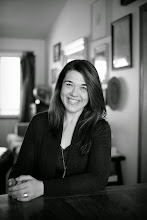"The purpose of photojournalism is to shout, attract attention, shine light on an injustice, or reveal a hidden truth. At the same time, it can invade privacy and even betray. In both studio and journalistic portraiture, while the results can be intriguing, horrifying, amusing, or memorable—or even change the world—even a viewer can sometimes feel complicit in an exploitation.
Photography deals with surfaces. What appears to be, is. But, sometimes, isn’t. A photograph can lie, easily and boldly… Contrary to popular sentiment or a photographer’s conceit, I don’t believe a person’s face alone can reveal his character. So the photographer becomes detective as well as explorer, searching for clues that tie up the loose ends and complete the picture… In the end, the pure portrait conveys only what [the subject] looks like, how long he’s lived, his mood at the moment, and the skill—and intent—of the photographer. We need his environment for the whole story."
-Jodi Cobb
"Photography’s stunning power to collect facts on the one hand and create fantasies on the other can be delightful or maddening, depending upon the viewpoint of the particular audience. The manipulation of images is as old as photography itself, and controversies about it began long before the digital revolution. A photograph, manipulated or not, may be used to reveal reality or obscure it. Clearly, the simple acts of taking a picture and displaying it can get very complicated indeed. … Through the years it has become an ever more deeply held creed of Geographic editors and photographers that great photographs cannot be manipulated."
-In Focus, p. 158
I was conflicted about this the entire time I was in Zambia- are these pictures true? Are they intrusive? Am I exploiting anyone? Am I just a nosy American? What was I doing there? And people were so often happy to see me- I absolutely loved that connection we could have- even in the darkest of places my camera brought joy. But then, it also meant that sometimes people looked happy, in places that broke my heart, in places of raw suffering. Did I document it correctly, to communicate the right things? If anything, it's testimony to perhaps the most significant thing I experienced in Africa- hope can't be shut out, and it rises in the deepest valleys.
Again, I was always conflicted.
Let me show you what I mean.
This photograph is true. Unaltered. Complete reality.
But this one- to see her, she looks annoyed with me while talking on the phone, as if I'm intruding on her conversation.
Actually, she was a riot- she had all kinds of poses for me, loved to be photographed, and after I'd shoot, she'd immediately want to see the LCD- then she'd laugh out loud to see herself. She wasn't talking on her phone- she was proud of it, and wanted it in the shot. So, the picture alone doesn't tell the real story.
Or, in another way, this shot-
This baby looks relatively healthy, chubby. Actually, her body is swollen from malnutrition. Again, the photograph alone doesn't cut it.
This woman did "pose" for me- but in posing, stayed honest- her beauty and dignity shine, and her eyes are true. Did she "manipulate" the shot in a way? Yes- she sat nicely, anticipating the photograph, but it's still incredibly authentic.
See what I'm talking about here?? Moving on.
These dudes had several poses- totally cracked me up- it was required that I shoot every single one of them.
Our tour of this hospital was my first big cut for the immense suffering in Africa. Everything about it tore me up. I feel very ready to go back again and again to places like this- and it will always break my heart- but this first time, the weight of it all was incredibly intense.
I felt absolutely awful about photographing these people. It was one of the most uncomfortable situations of my life- photographing suffering- it was so incredibly intrusive. But over and over, they graciously allowed me in, and gave me opportunity to share a piece of their story with you.
This man had been lying in bed. When he saw me, we didn't speak, but he slowly sat up tall, and drew his bandaged hand up, unashamed of it- almost like he wanted me, and anyone else, to see- to remember him. It was powerful.
Here's another shot where he's aware, but it's not manipulated. The expression is genuine and true. Are you tired of reading this yet?
OK. One more. See- this image was supposed to be true. Josh really was doing exactly this. Then he saw my camera and looked at me and moved like he thought he was in the way or something. I think I sort of surprised him. So then I motioned for him to keep reading.
So, it's almost true. Almost.
Alright, I'm done.












2 comments:
Such a huge dilemma, Megan, and we deal with it all the time. When you work in compassionate ministry, you want to accurately showcase your work and the people you are ministering to. You often want to or need to evoke an emotion from your audience, but at the same time, want to be careful about exploiting people or manipulating people just to elicit an emotional response. It takes so much discernment, and still it's never easy to find the balance. Thanks for your honesty!
Ah! I just came upon your blog through some different links (specifically- the poetice website) and I'm actually very interested in international photojournalism. This is stuff that I will definitely be dealing with very soon. If you happen to have any advice my email is thekatybee@gmail.com
Sorry if this is a strange message, but I appreciated this post!
Post a Comment